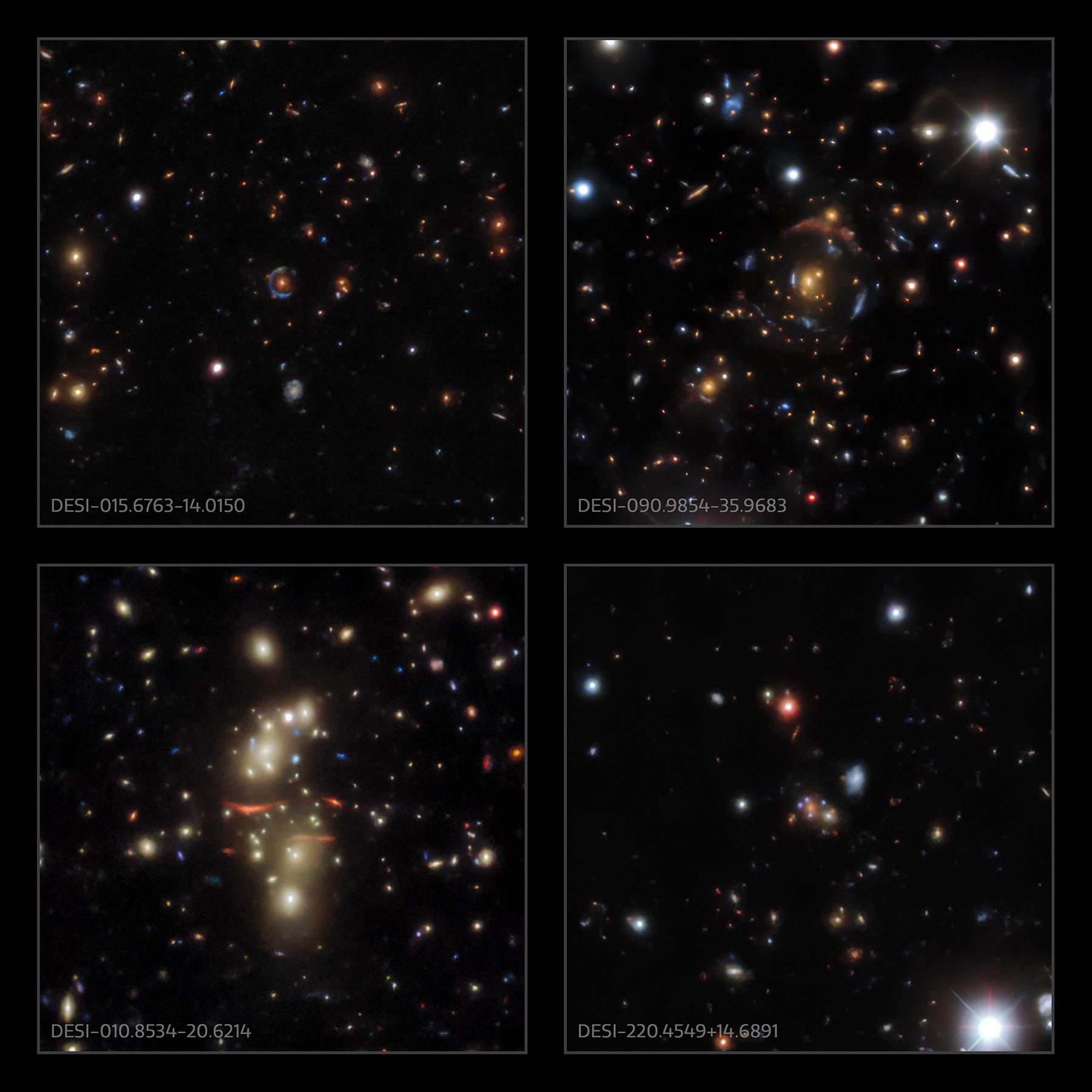NOIRLab: Doubling the Number of Known Gravitational Lenses

Examples of gravitational lenses found in the DESI Legacy Survey data. Credit: DESI Legacy Imaging Surveys/LBNL/DOE & KPNO/CTIO/NOIRLab/NSF/AURA
Data from the DESI (Dark Energy Spectroscopic Instrument) Legacy Imaging Surveys have revealed over 1200 new gravitational lenses, approximately doubling the number of known lenses. Discovered using machine learning trained on real data, these warped and stretched images of distant galaxies provide astronomers with a flood of new targets with which to measure fundamental properties of the Universe such as the Hubble constant, which describes the expanding Universe.
Astronomers hunting for gravitational lenses utilized machine learning to inspect the vast dataset known as the DESI Legacy Imaging Surveys, uncovering 1210 new lenses. The data were collected at Cerro Tololo Inter-American Observatory (CTIO) and Kitt Peak National Observatory (KPNO), both Programs of the National Science Foundation’s NOIRLab. The ambitious DESI Legacy Imaging Surveys just had its ninth and final data release.
Discussed in scientific journals since the 1930s, gravitational lenses are products of Einstein’s General Theory of Relativity. The theory says that a massive object, such as a cluster of galaxies, can warp spacetime. Some scientists, including Einstein, predicted that this warping of spacetime might be observable, as a stretching and distortion of the light from a background galaxy by a foreground cluster of galaxies. The lenses typically appear in images as arcs and streaks around foreground galaxies and galaxy clusters.
Only 1 in 10,000 massive galaxies are expected to show evidence of strong gravitational lensing [1], and locating them is not easy. Gravitational lenses allow astronomers to explore the most profound questions of our Universe, including the nature of dark matter and the value of the Hubble constant, which defines the expansion of the Universe. A major limitation of the use of gravitational lenses until now has been the small number of them known.
“A massive galaxy warps the spacetime around it, but usually you don’t notice this effect. Only when a galaxy is hidden directly behind a giant galaxy is a lens possible to see,” notes the lead author of the study, Xiaosheng Huang from the University of San Francisco. “When we started this project in 2018, there were only about 300 confirmed strong lenses.”
“As a co-leader in the DESI Legacy Surveys I realized this would be the perfect dataset to search for gravitational lenses,” explains study co-author David Schlegel of Lawrence Berkeley National Laboratory (LBNL). “My colleague Huang had just finished teaching an undergraduate class on machine learning at the University of San Francisco, and together we realized this was a perfect opportunity to apply those techniques to a search for gravitational lenses.”
The lensing study was possible because of the availability of science-ready data from the DESI Legacy Imaging Surveys, which were conducted to identify targets for DESI’s operations, and from which the ninth and final dataset has just been released. These surveys comprise a unique blend of three projects that have observed a third of the night sky: the Dark Energy Camera Legacy Survey (DECaLS), observed by the DOE-built Dark Energy Camera (DECam) on the Víctor M. Blanco 4-meter Telescope at CTIO in Chile; the Mayall z-band Legacy Survey (MzLS) [2], by the Mosaic3 camera on the Nicholas U. Mayall 4-meter Telescope at KPNO; and the Beijing-Arizona Sky Survey (BASS) by the 90Prime camera on the Bok 2.3-meter Telescope, which is owned and operated by the University of Arizona and located at KPNO.
“We designed the Legacy Surveys imaging project from the ground up as a public enterprise, so that it could be used by any scientist,” said study co-author Arjun Dey, from NSF’s NOIRLab. “Our survey has already yielded more than a thousand new gravitational lenses, and there are undoubtedly many more awaiting discovery.
